079000 - Joint Protection - Sealants and Expansion
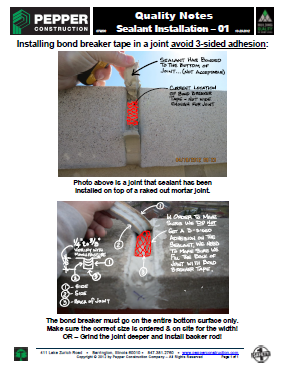
Sealant Installation 01 3-sided adhesion - QN
- Corey S Zussman, AIA
- Link
Installing bond breaker tape in a joint avoid 3-sided adhesion. The bond breaker must go on the entire bottom surface only.
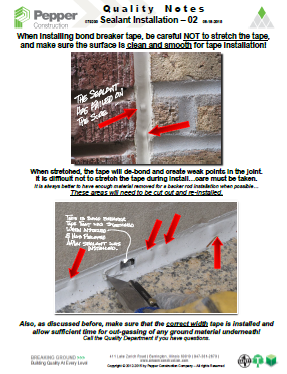
Sealant Installation 02 Bond Breaker - QN
- Corey S Zussman, AIA
- Link
When installing bond breaker tape, be careful NOT to stretch the tape, and make sure the surface is clean and smooth for tape installation.
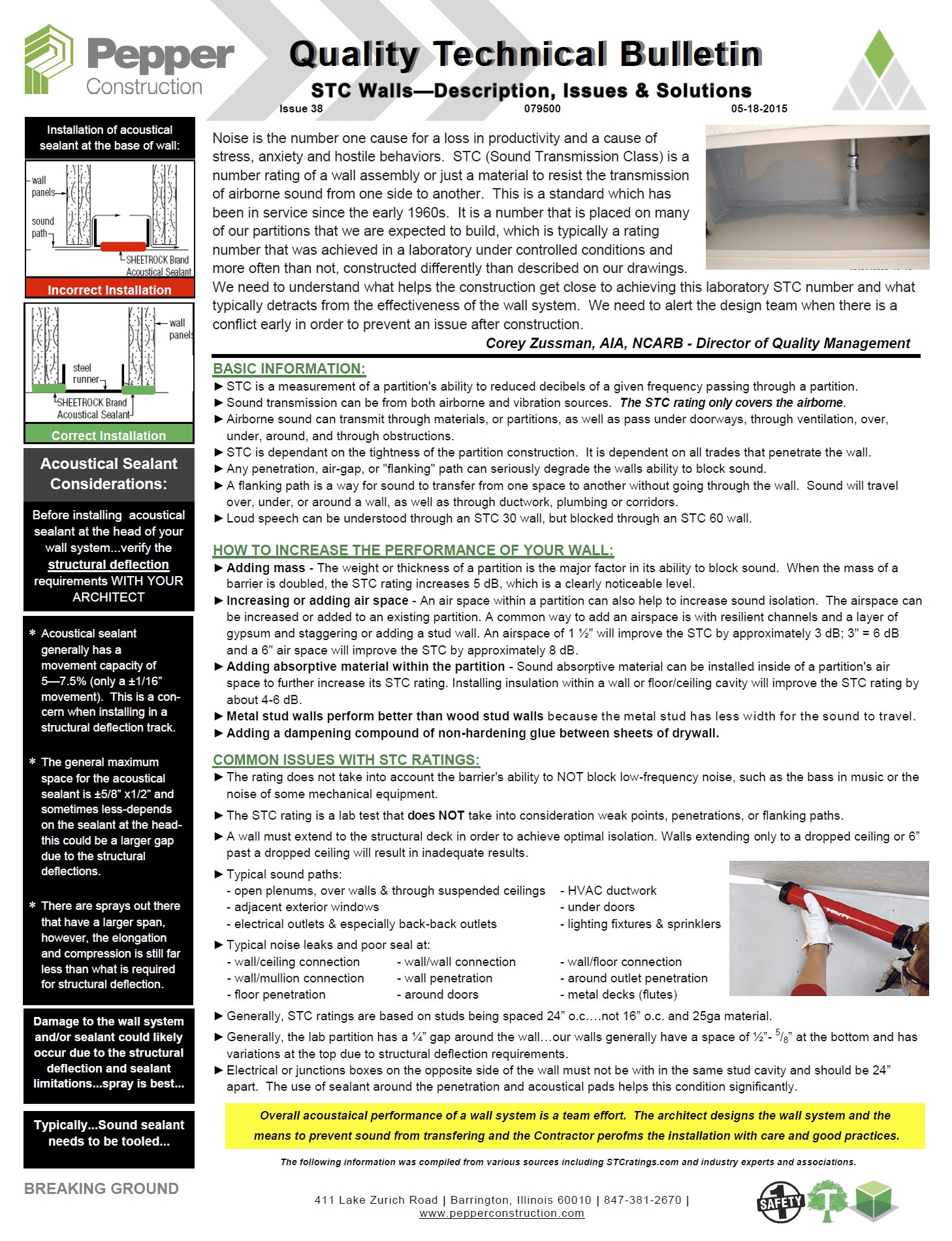
Proper Installation of Sealant MJ - Issue 37
- Corey S Zussman, AIA
- Link
The key to a long lasting sealant joint is proper sealant installation, design, and to avoid three-sided adhesion with the use of a bond breaker. Care and attention to the entire process is critical. There are many different sealant types and materials, all with their own unique requirements and characteristics. At the same time, there are many similar requirements for any sealant type. This bulletin will describe many of the common requirements among sealant types, details and joint designs, including fire stopping joints that have movement capabilities.

STC Walls Acoustical Sealant - Issue 38
- Corey S Zussman, AIA
- Link
Noise is the number one cause for a loss in productivity and a cause of stress, anxiety and hostile behaviors. STC (Sound Transmission Class) is a number rating of a wall assembly or just a material to resist the transmission of airborne sound from one side to another. This is a standard which has been in service since the early 1960s. It is a number that is placed on many of our partitions that we are expected to build, which is typically a rating number that was achieved in a laboratory under controlled conditions and more often than not, constructed differently than described on our drawings. We need to understand what helps the construction get close to achieving this laboratory STC number and what typically detracts from the effectiveness of the wall system. We need to alert the design team when there is a conflict early in order to prevent an issue after construction.
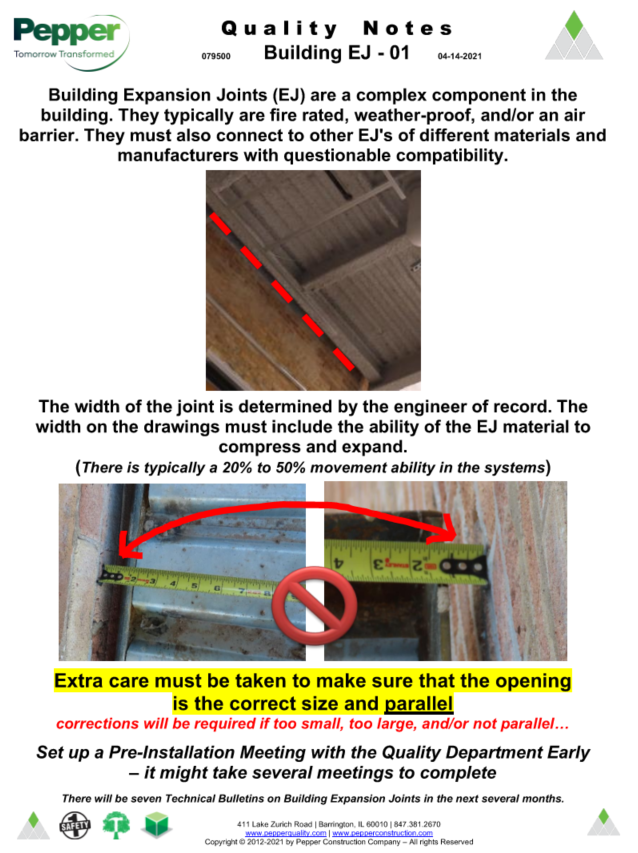
Building EJ - Opening Size - QN
- Corey S Zussman, AIA
- Link
Building expansion joints (EJ) are a complex component in the building. They typically are fire-rated, weather-proof, and/or an air barrier. They must also connect to other EJ's of different materials and manufacturers with questionable compatibility.
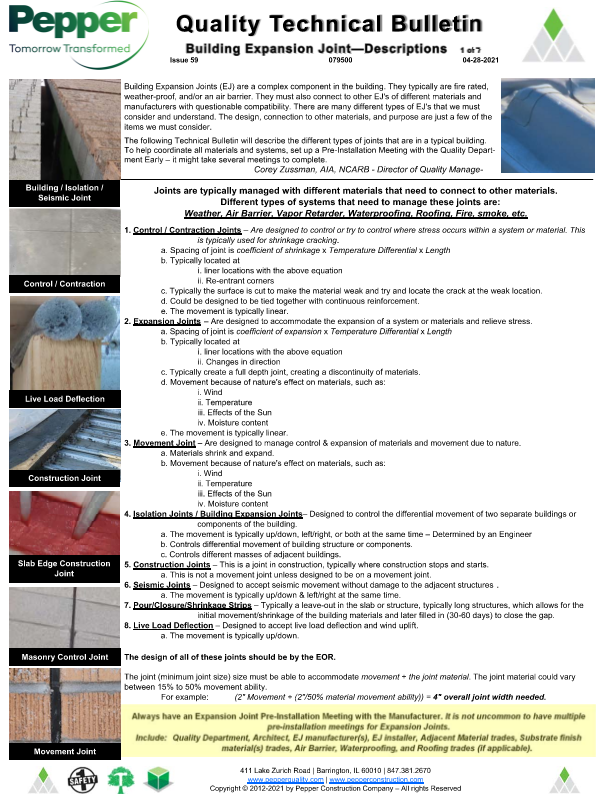
Building EJ 01 Descriptions - Issue 59
- Corey S Zussman, AIA
- Link
Building Expansion Joints (EJ) are a complex component in the building. They typically are fire rated, weather-proof, and/or an air barrier. They must also connect to other EJ's of different materials and manufacturers with questionable compatibility. The following Technical Bulletin will describe the different types of joints that are in a typical building. To help coordinate all materials and systems, set up a Pre-Installation Meeting with the Quality Department early – it might take several meetings to complete.
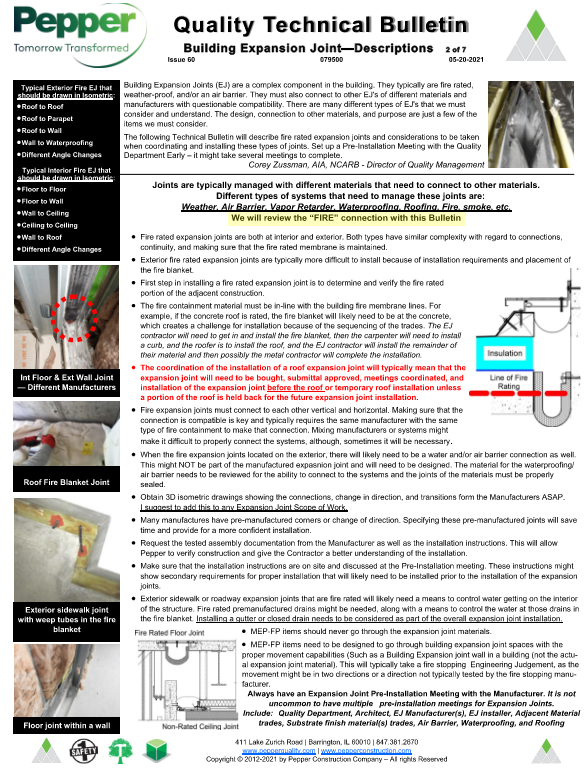
Building EJ 02 Fire Rated - Issue 60
- Corey S Zussman, AIA
- Link
The attached Technical Bulletin describes fire-rated expansion joints and considerations to be taken when coordinating and installing these types of joints. For example, the coordination of the roof expansion joint installation will typically mean that the expansion joint will need to be bought, submittal approved, meetings coordinated, and the expansion joint installed before the roof or temporary roof installation unless a portion of the roof is held back for the future expansion joint installation.
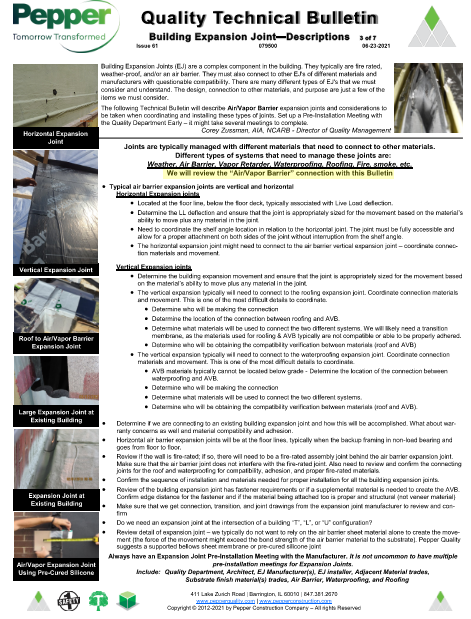
Building EJ 03 AVB - Issue 61
- Corey S Zussman, AIA
- Link
Building expansion joints (EJ) are a complex component in the building. They typically are fire rated, weather-proof, and/or an air barrier. They must also connect to other EJs of different materials and manufacturers with questionable compatibility. For air/vapor barrier EJs, considerations should be taken when coordinating with and installing other systems such as weather, air barrier, vapor retarder, waterproofing, roofing, fire, smoke, etc.
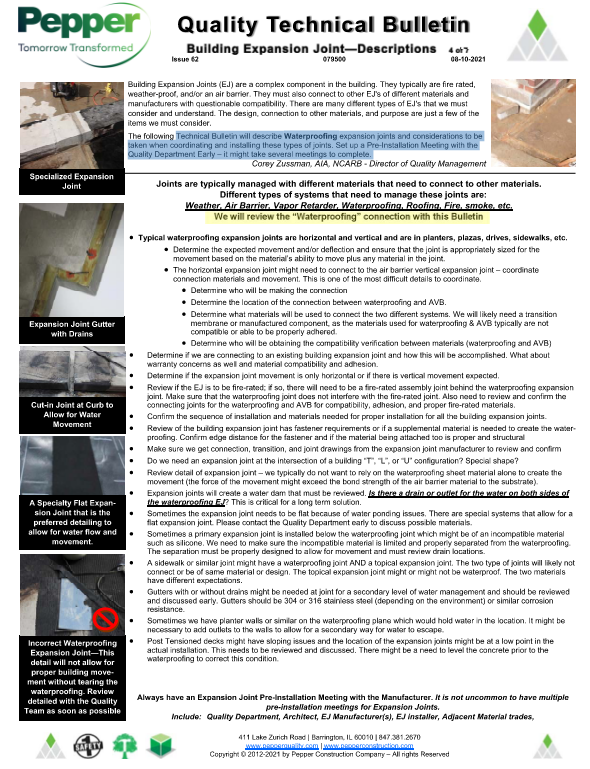
Building EJ 04 Waterproofing - Issue 62
- Corey S Zussman, AIA
- Link
Building Expansion Joints (EJ) are a complex component in the building. They typically are fire rated, weather-proof, and/or an air barrier. They must also connect to other EJ's of different materials and manufacturers with questionable compatibility. This Technical Bulletin describes Waterproofing expansion joints and considerations to be taken when coordinating and installing these types of joints. Set up a Pre-Installation Meeting with the Quality Department Early – it might take several meetings to complete.
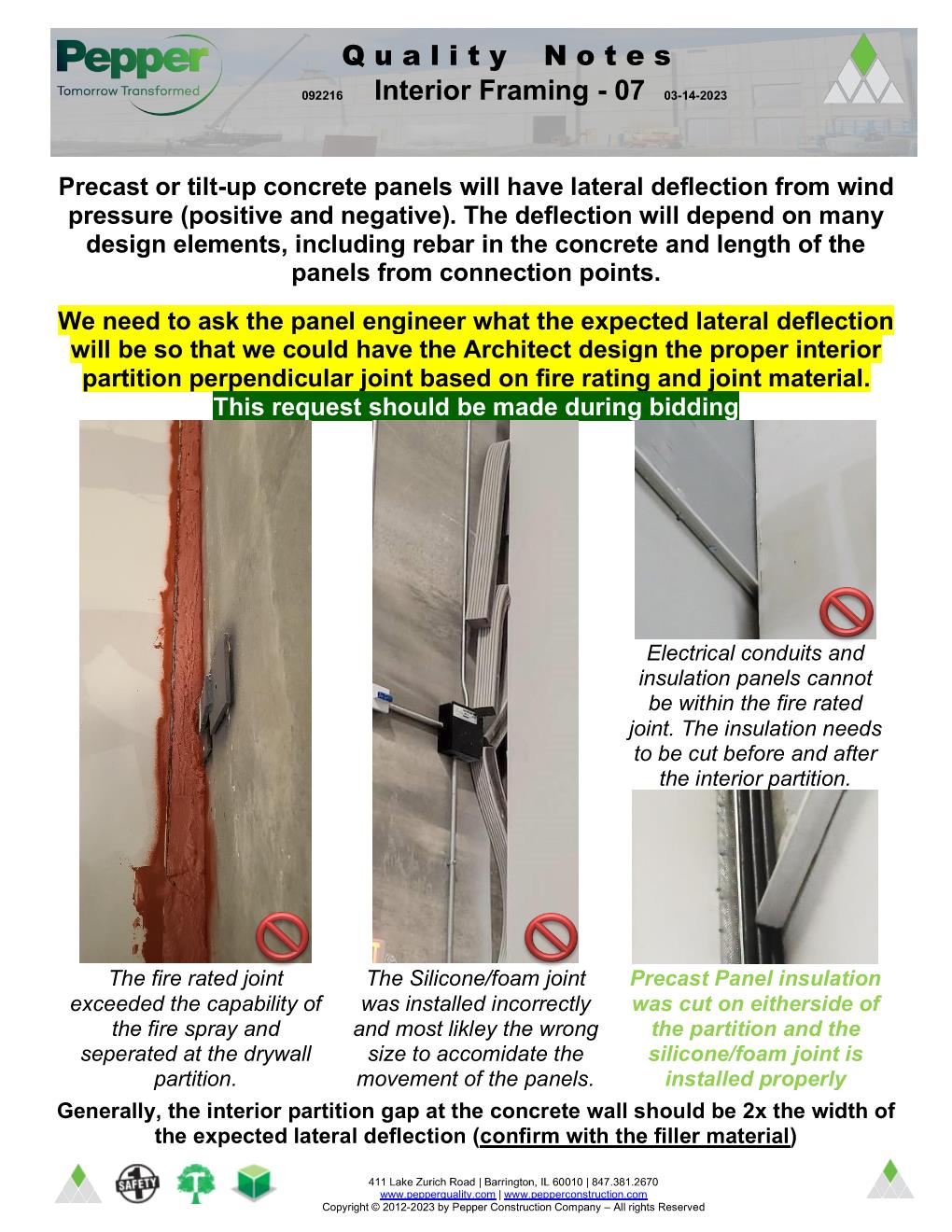
Precast Concrete and Interior Wall - Lateral Deflection QN
- Corey S Zussman, AIA
- Link
Precast or tilt-up concrete panels will have lateral deflection from wind pressure (positive and negative). The deflection will depend on many design elements, including rebar in the concrete and length of the panels from connection points. We need to ask the panel engineer what the expected lateral deflection will be so that we could have the Architect design the proper interior partition perpendicular joint based on fire rating and joint material. This request should be made during bidding
